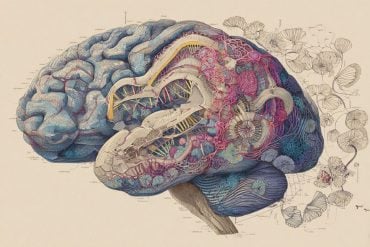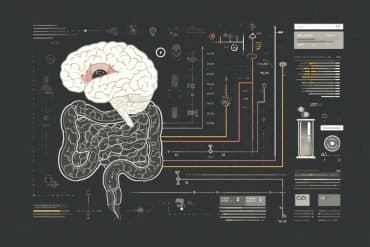Summary: Alzheimer’s disease not only damages memory but also distorts the brain’s internal clock, disrupting the daily rhythms of hundreds of genes tied to brain health. Researchers found that in mice with amyloid buildup, normal circadian gene activity in microglia and astrocytes—the brain’s immune and support cells—became erratic.
This disruption affected genes that regulate waste clearance and inflammation, potentially accelerating neurodegeneration. By identifying how Alzheimer’s rewires circadian gene cycles, scientists hope to develop treatments that restore rhythm and slow disease progression.
Key Facts
- Circadian Disruption: Amyloid buildup in Alzheimer’s alters normal day-night gene cycles in microglia and astrocytes.
- Gene Reprogramming: Over half of the known Alzheimer’s-related genes are rhythmically controlled and disrupted in disease models.
- Therapeutic Target: Resetting or strengthening circadian rhythms may reduce amyloid accumulation and inflammation.
Source: WUSTL
Alzheimer’s disease is notorious for scrambling patients’ daily rhythms. Restless nights with little sleep and increased napping during the day are early indicators of disease onset, while sundowning, or confusion later in the day, is typical for later stages of the disease.
These symptoms suggest a link between the progression of the disease and the circadian system — the body’s internal clock that controls our sleep and wake cycle — but scientists did not know the full nature of the connection.
Researchers from Washington University School of Medicine in St. Louis have now shown in mice that the circadian rhythms within particular brain cells are disrupted in Alzheimer’s disease in ways that change how and when hundreds of genes regulate key functions in the brain.
The findings, published October 23 in Nature Neuroscience, suggest that controlling or correcting these circadian rhythms could be a potential way to treat the disease.
“There are 82 genes that have been associated with Alzheimer’s disease risk, and we found that the circadian rhythm is controlling the activity of about half of those,” said Erik S. Musiek, MD, PhD, the Charlotte & Paul Hagemann Professor of Neurology at WashU Medicine, who led the study. In mice modeling Alzheimer’s disease, the typical daily activity patterns of those genes were altered.
“Knowing that a lot of these Alzheimer’s genes are being regulated by the circadian rhythm gives us the opportunity to find ways to identify therapeutic treatments to manipulate them and prevent the progression of the disease.”
Musiek, the co-director of the Center on Biological Rhythms and Sleep (COBRAS) at WashU Medicine and a neurologist who specializes in aging and dementia, said that changes in sleep patterns are among the most frequent concerns reported to him by caregivers of Alzheimer’s patients.
He and colleagues have previously shown that these changes begin in Alzheimer’s years before memory loss becomes apparent. He noted that in addition to creating burdens for caregivers and patients, disrupted sleep patterns generate biological and psychological stresses that accelerate the progression of the disease.
Breaking this feedback loop requires identifying its origins. The body’s circadian clock is thought to act on 20% of all genes in the human genome, controlling when they turn on or off to manage processes including digestion, the immune system and our sleep-wake cycle.
Musiek had previously identified a specific protein, YKL-40, that fluctuates across the circadian cycle and regulates normal levels of amyloid protein in the brain.
He found that too much of YKL-40, which is linked to Alzheimer’s risk in humans, leads to amyloid build-up, an accumulation that is a hallmark of the neurodegenerative disease.
Amyloid disrupts rhythmic brain functions
The cyclic nature of Alzheimer’s symptoms suggests that there are more circadian-regulated proteins and their associated genes involved beyond YKL-40.
So in this latest study, Musiek and his colleagues examined gene expression in the brains of mice with accumulations of amyloid proteins that mimic early stages of Alzheimer’s, as well as those of both healthy, young animals and aged mice without amyloid accumulations.
The scientists collected tissue at 2-hour intervals over 24 hours and then performed an analysis of what genes were active during particular phases of the circadian cycle.
They found that the amyloid accumulations threw off the daily rhythms of hundreds of genes in brain cells known as microglia and astrocytes in ways that were different from what aging alone caused.
Microglia are part of the brain’s immune response, clearing away toxic materials and dead cells, while astrocytes have roles in supporting and maintaining communication between neurons.
The affected genes are generally involved in helping microglial cells break down waste material from the brain, including amyloid.
While the circadian disruption didn’t entirely shut down the genes in question, it turned an orderly sequence of events into a scattershot affair that could degrade the optimal synchronicity of brain cells’ functions, such as clearing amyloid.
In addition, the researchers found that the presence of amyloid appeared to create new rhythms in hundreds of genes that do not typically have a circadian pattern of activity. Many of the genes are involved in the brain’s inflammatory response to infection or imbalances such as amyloid plaque build-up.
Musiek said that altogether the findings point to exploring therapies that target circadian cycles in microglia and astrocytes to support healthy brain function.
“We have a lot of things we still need to understand, but where the rubber meets the road is trying to manipulate the clock in some way, make it stronger, make it weaker or turn it off in certain cell types,” he said.
“Ultimately, we hope to learn how to optimize the circadian system to prevent amyloid accumulation and other aspects of Alzheimer’s disease.”
Sheehan PW, Fass S, Sapkota D, Kang S, Hollis HC, Lawrence JH, Anafi RC, Dougherty JD, Fryer JD, Musiek ES. A glial circadian gene expression atlas reveals cell type and disease-specific reprogramming in response to amyloid pathology or aging. Nature Neuroscience. October 23, 2025. DOI: 10.1038/s41593-025-02067-1.
Funding: This study was funded by the National Institute on Aging (R01AG054517, T32AG058518), the National Institute of Neurological Disorders and Stroke (R01NS102272) and the National Institutes of Health (R00AG061231). The content is solely the responsibility of the authors and does not necessarily represent the official view of the NIH.
Key Questions Answered:
A: It disrupts the rhythmic expression of hundreds of genes in glial cells, disturbing the timing of essential brain functions such as immune responses and waste clearance.
A: Microglia and astrocytes, which manage immune defense and neuron support, experience major disruptions to their daily gene activity patterns.
A: Correcting or reinforcing the brain’s internal clock could improve gene regulation tied to amyloid removal and inflammation control, potentially slowing the disease’s progression.
About this Alzheimer’s disease, genetics, and circadian rhythm research news
Author: Abeeha Shamshad
Source: WUSTL
Contact: Abeeha Shamshad – WUSTL
Image: The image is credited to Neuroscience News
Original Research: Open access.
“A glial circadian gene expression atlas reveals cell type and disease-specific reprogramming in response to amyloid pathology or aging” by Erik S. Musiek et al. Nature Neuroscience
Abstract
A glial circadian gene expression atlas reveals cell type and disease-specific reprogramming in response to amyloid pathology or aging
While circadian rhythm disruption may promote neurodegenerative disease, the impact of aging and neurodegenerative pathology on circadian gene expression patterns in different brain cell types remains unknown.
Here we used a translating ribosome affinity purification to identify the circadian translatomes of astrocytes, microglia and bulk tissue in healthy mouse cortex and in the settings of amyloid-β plaque pathology or aging.
We show that glial circadian translatomes are highly cell-type-specific and exhibit profound, context-dependent reprogramming in response to amyloid pathology or aging.
Transcripts involved in glial reactivity, immunometabolism and proteostasis, as well as nearly half of all Alzheimer’s disease risk genes, displayed circadian oscillations, many of which were altered by pathology.
Microglial oxidative stress and amyloid phagocytosis showed temporal variation in gene expression and function.
Thus, circadian rhythms in gene expression are cell-dependent and context dependent, and provide important insights into glial function in health, Alzheimer’s disease and aging.







